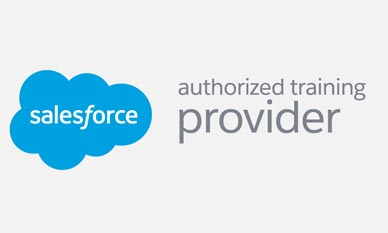
Objects and Fields
- Describe the capabilities of objects on the Force.com platform
- Create a custom object
- Create custom fields
- Create relationship fields
Work Effectively with Custom Objects and Fields
- Create formula fields
- Create roll-up summary fields
- Describe the capabilities of record types
Programming with Apex
- Describe key aspects of Apex that differentiate it from other languages, such as Java and C#
- Describe why Apex transactions and governor limits must be considered when writing Apex
- Execute simple Apex
- Use the sObject data type, the primitive data types, and basic control statements in Apex
Use SOQL to Query Your Org’s Data
- Write a basic query using Salesforce’s query language, SOQL
- Process the result of a query in Apex
- Create a query dynamically at run-time
Use SOQL to Query Parent-Child Relationships
- Describe a relationship query
- Write a query that traverses a child-to-parent relationship
- Write a query that traverses a parent-to-child relationship
DML Essentials
- List the differences between the ways you can invoke DML operations
- Write Apex to invoke DML operations and handle DML errors
Trigger Essentials
- Describe what a trigger is used for
- Describe the syntax of a trigger definition
- Use trigger context variables
Classes
- Describe how Apex classes are used
- Define an Apex class
- Determine what data an Apex class can access
The Save Order of Execution and Apex Transactions
- Describe key points in the Order of Execution
- Describe how triggers fit into and can be impacted by the Order of Execution
- Describe the lifecycle of an Apex Transaction
- Describe the memory lifecycle for static variables
Testing Essentials
- Describe Apex’s testing framework
- Create test data
- Write and run an Apex test
Testing Strategies
- Describe practices for writing code that is easy to maintain and extend
- Write triggers and classes that assume batches of data as input
- Write code that works efficiently with the database, both in querying and using DML
Strategies for Designing Efficient Apex Solutions
- Determine your code coverage percentages
- Create tests using best practices
Trigger Design Strategies
- List declarative mechanisms you can use to implement complex business logic, for what types of problems they are best used, and their limitations
- Describe ways in which you can use declarative functionality to improve your programmatic solutions
Creating Visualforce Pages
- Create a Visualforce page
- Reference a standard controller
- Launch a Visualforce page using a custom button
- Display data from a record in a Visualforce page
Exploring the View and Controller Layers of Visualforce
- Create a Visualforce page
- Display related data
- Invoke standard controller actions
Working with Custom Controllers and Controller Extensions
- Create controller extensions
- Create a custom controller
- Work with properties
- Use PageReferences
- Invoke custom methods in Visualforce pages
Working with List Controllers and SOSL Queries
- Use a standard list controller in a Visualforce page
- Create a SOSL query
- Create a custom list controller
Visualforce Development Considerations
- Determine whether a declarative solution exists for your requirements
- Describe common governor limit issues and security concerns
- Describe Visualforce strategies
Testing Visualforce Controllers
- Describe how a Visualforce controller interacts with the view
- Write tests for controller constructors
Write tests for action methods, getters, setters, and properties
This course is designed for programmatic developers who are new to the Force.com platform, who need to be able to write programmatic customizations to both the business logic and user interface layers using Apex and Visualforce.
The prerequisites include a solid understanding of basic Salesforce concepts and functionality and:
- 1 year programming in Java (or another object-oriented programming language)
- Basic data modeling for relational databases
- Basic SQL
- Basic HTML
- Basic JavaScript
When you complete this course, you will be able to:
- Create and modify objects using the declarative interface
- Write business logic customizations using Apex triggers and classes. Those customizations will use SOQL and DML.
- Design programmatic solutions that take advantage of declarative customizations
- Describe how your trigger code works within the basics of the Save Order of Execution
- Describe some of the fundamental aspects of designing programs on a multi-tenant platform
- Write Visualforce markup and code to customize the user interface
- Use the built-in testing framework to test Apex and Visualforces
